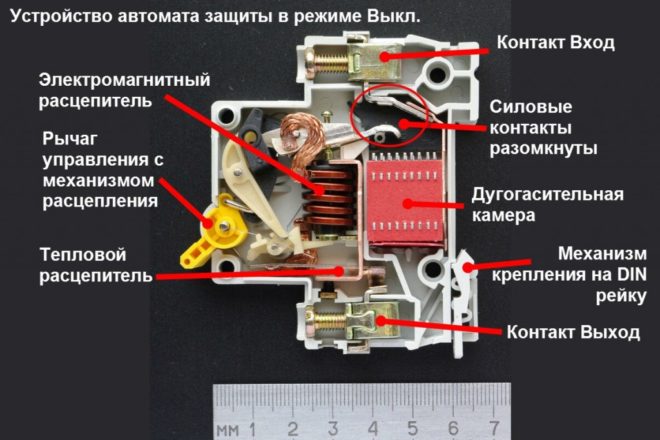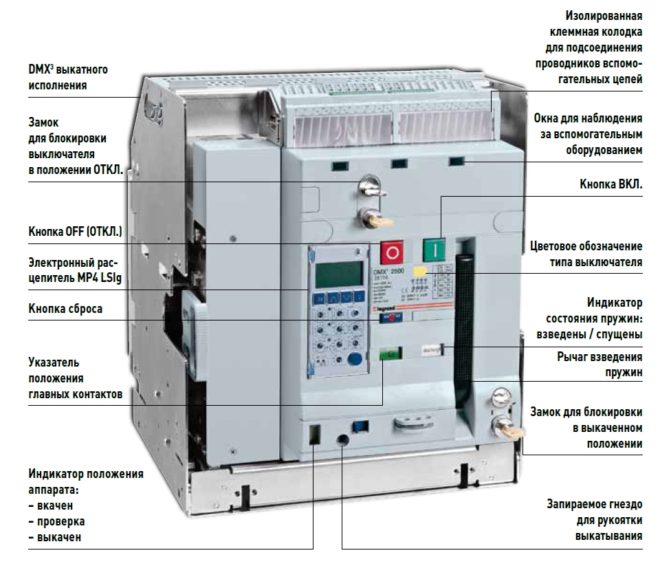How to correctly connect machines in an electrical panel

Circuit breakers, also known as packers or automatic machines, are switching devices whose task is to supply current to the elements of the power grid, and in case of a malfunction, to automatically de-energize. They are usually mounted in a switchboard and protect the circuit from damage caused by excessive loads, voltage drops, and short circuits. In this material we will talk about how this equipment is classified, what are the features of its operation and how to correctly connect the machines in the electrical panel.
Content
Classification of circuit breakers
Today these devices are sold in a huge range. They differ from each other in the following characteristics:
- Main circuit current. It can be variable, permanent, or combined.
- Control method. The equipment can be operated manually or by means of a motor drive.
- Installation method. Devices are plug-in, retractable or stationary.
- Release type. These elements can be electronic, electromagnetic and thermal, as well as semiconductor.

- Body type. It can be modular, cast or open.
- Working current indicator. Its value can be from 1.6 A to 6.3 kA.
Modern machines are distinguished by a complex network protection mechanism. They have additional capabilities, which include:
- The ability to open the electrical circuit at a distance.
- Presence of signal contact groups.
- Automatic operation of a protective device in the event of a voltage drop to a critical value.
A step-by-step diagram for choosing a circuit breaker in the video:
Packets can be of various standard sizes, and with their help it is possible to protect electrical networks not only in apartments and private houses, but also in large objects. These devices are produced both in Russia and abroad.
In domestic conditions, modular circuit breakers, small and lightweight, are most often used. They got the name "modular" due to their standard width, which is 1 module (1.75 cm).
In order to protect the electrical circuits of buildings, the following types of switches are installed:
- Differential.
- Automatic.
- RCD.
RCDs, as they are abbreviated as residual current devices, prevent electric shock to a person who touches the conductor, and prevent the surrounding objects from igniting in the event of an electricity leak, which can occur if the insulation of cables is damaged.
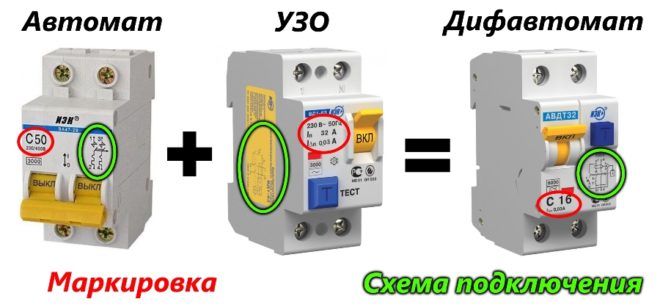
Circuit breakers protect circuits from short circuits and allow manual power on and off. The most advanced protective device is the differential circuit breaker. It combines the capabilities of a residual current device and a conventional circuit breaker. This bag is equipped with built-in protection against excessive electron flow. It is controlled by a differential current.
In single-phase power grids, single-pole and double-pole machines can be installed. The choice of the bag is influenced by the number of wires in the electrical wiring.
Circuit breakers: device and principle of operation
Before considering the procedure for connecting the circuit breakers in the electrical panel, let's figure out how they are arranged and on what principle they are triggered.
The product includes the following elements:
- Housing.
- Control system.
- Top and bottom terminals.
- Switching device.
- Arc extinguishing chamber.
Fire-resistant plastic is used as a material for the body and control system. The switching device has moving contacts, as well as fixed ones.
An arcing chamber is installed on a pair of contacts, which are the pole of the bag. When the contacts are broken under load, an electric arc arises, which is extinguished by the camera. The latter consists of steel plates, isolated from each other and at the same distance. The plates of the chamber contribute to cooling and extinction of the electric arc, which appears in case of malfunctions. The machines can have one, two or four pairs of contacts.
Two-pole machines have two pairs of contacts: one is movable, the other is fixed.
Such a switch is equipped with a position indicator, which makes it easy to find out if the machine is on (red light) or off (green).
The principle of operation of circuit breakers in the video is clear:
Release
To turn off the machine in case of emergency, the device is equipped with a release. There are several types of these mechanisms, structurally different from each other and working according to different principles.
Thermal release
Structurally, this element includes a plate pressed from two different metals with an unequal coefficient of nonlinear expansion, which is connected to a circuit under load and is called bimetallic. When the release is in operation, the flow of electrons passing through the plate heats it up.
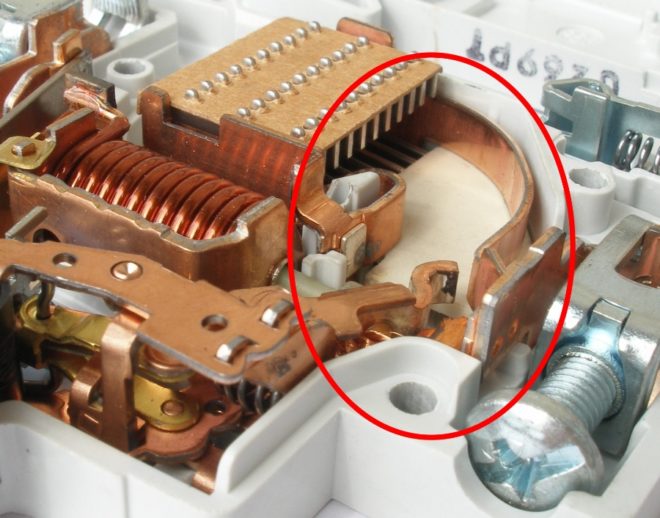
Since the coefficient of expansion of the metal is less than that of the plate, it bends towards it. When the current rating exceeds the permissible value, the curved plate, acting on the trigger, turns off the machine. If the ambient temperature is abnormal, the switch is also tripped.
Magnetic release
A release of this type is a coil with an insulated copper winding and a core. Since the load current flows through it, it must be connected to the circuit in series with the contacts. If the load current exceeds the permissible rating, the core will move under the influence of the magnetic field of the release and, by means of a tripping device, will open the contacts of the bag.
Selective circuit breakers with semiconductor release
These devices are equipped with a special panel on which the time of the machine's shutdown is set. They provide a time delay in the event of a short circuit, which makes it possible to turn off the emergency section in the event of an abnormal situation, without interrupting the power supply to the object.
A circuit breaker without a release is called a disconnector.
How to choose a machine?
Before starting the installation of protective circuit breakers, you need to choose them, and also understand the intricacies of the connection. People who want to know how to wire a circuit breaker are asking various questions. For example, before or after the meter are the machines connected in the switchboard? Should an input machine be installed? Users are interested in these and other connection nuances.
Main parameters of circuit breakers
The characteristics of circuit breakers include:
- Rated current value (in Amperes).
- Mains operating voltage (in Volts).
- Maximum short-circuit current.
- Ultimate switching capacity.
- Number of poles.
The limiting switching capacity is characterized by the maximum permissible value at which the switch is capable of operating. The PCR of household devices can be 4.5, 6 or 10 kA.
When choosing, they are most often guided by such basic indicators as short-circuit breaking current, as well as overload current.
The cause of overload is the connection to the power grid of devices with an excessively high total power, which leads to an excess of the permissible temperature of the contact connections and cables.
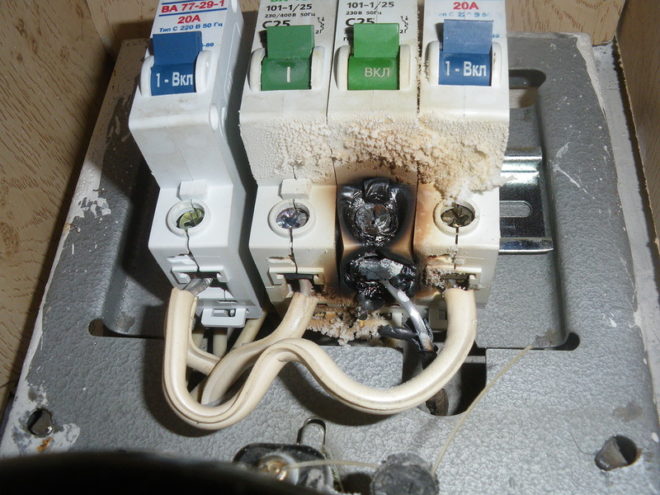
Taking this into account, it is necessary to install a packet bag in the circuit, the value of the shutdown current of which is not less than the calculated one, and it is better if it slightly exceeds it. To determine the estimated current, you need to summarize the power of the devices that are supposed to be connected to the circuit (for each of them, this indicator is in the passport). The resulting number must be divided by 220 (the standard value of the voltage in a household network). The result obtained will be the value of the overload current. It should also be borne in mind that it should not exceed the current rating that the wire can withstand.
The magnitude of the short-circuit breaking current is the indicator at which the circuit breaker is turned off. The calculation of the short-circuit current is carried out when designing a line according to formulas and reference tables, as well as using special equipment. Based on the obtained value, the type of protection is determined. On small objects and in household networks, type B or C machines are used.
Do-it-yourself installation of a circuit breaker in an electrical panel
First of all, you need to decide on the connection of the power wires, and only after that figure out how to connect the machine to the network. If you do not know whether the supply conductors should be connected above or below the bag, refer to the requirements of the PUE, which are the main guiding document when carrying out electrical work.
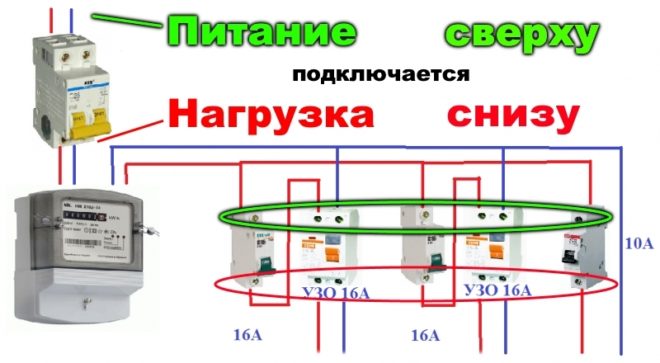
The Rules clearly state that the power cable must be connected to fixed contacts, and this requirement must be met in any circuit for connecting circuit breakers. In any modern device, fixed contacts are located on top.
For installation, you will need control devices and a tool, which includes:
- Assembly knife.
- Screwdrivers (Phillips and slotted).
- Multimeter or indicator screwdriver.
So how do you connect the machine correctly? Consider the installation of circuit breakers in single-phase networks.
Two-phase and three-phase connections are more complex and should be done by a specialist.
Single pole circuit breaker
Installation is carried out in a network where two cables are used to perform the input: zero (PEN) and phase (L). Such a system exists in old buildings. The supply conductor is connected to the input terminal of the machine, then from the output it passes through the meter, after which it is wired to protective devices of specific groups. The supply zero cable to the PEN is also fed through an electric meter.
The use of one, two and three-pole machines in the video:
Two-pole automatic machine
We consider the installation of a protective device in a single-phase network, where three conductors are used for input: phase, neutral and grounding cable. The input terminals, marked on the device with numbers 1 and 3, are located at the top of the machine, and the output terminals (2 and 4) are at the bottom.
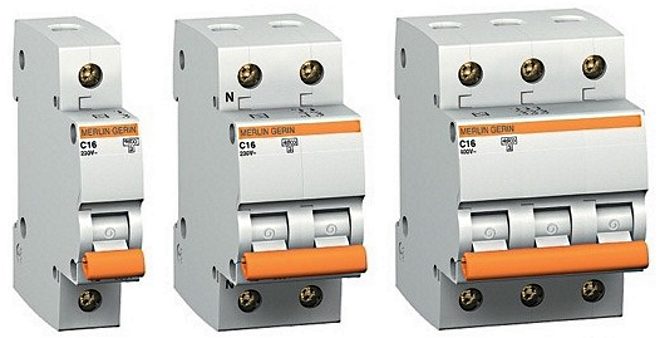
The supply cable fits into the input terminal 1 and is securely fixed to it. In the same way, the neutral wire is attached to terminal 3. The phase passes through the electricity meter. Power is distributed evenly across the switch groups. From terminal 4, the zero cable is connected to the N bus, passing through the counter and the RCD.
Connecting wires
A passport is attached to any circuit breaker, which describes how to correctly connect the wires to its terminals.The document contains all the necessary information - from the cross-section of the cables and the type of their connection to the length of the stripped part of the conductor.
Stripping the ends of the wires for connecting household machines is done with a mounting knife by about 1 cm.You can distinguish the conductors by their color coding:
- The phase cable is white or brown.
- The neutral wire is black, blue or light blue.
- The grounding conductor is green.
After stripping the end of the wire with a knife, insert it into the contact clamp and secure with the fixing screw. The screws are tightened with a screwdriver. After fixing the wire, you need to twitch a little to make sure it is securely fixed. If a flexible wire is used to connect to the bag, then to increase the reliability of the connection, special lugs should be used.
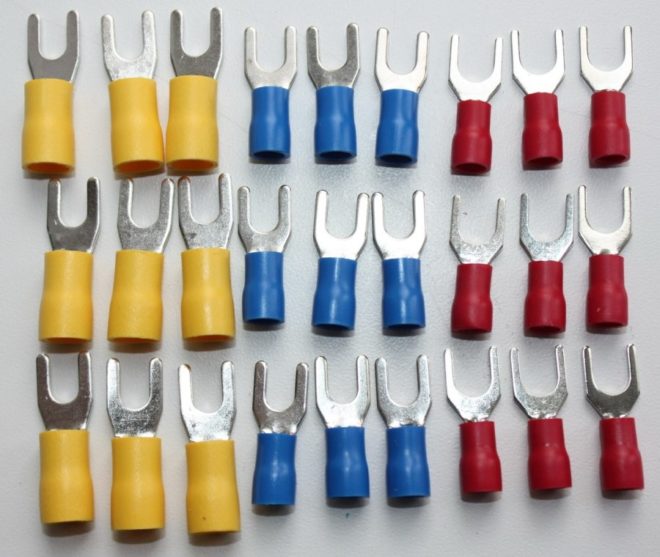
In order for the installation of machines in the switchboard and the connection of cables to them to be performed correctly, you need to remember about common mistakes and avoid them during operation:
- Contact with the insulating layer.
- Too much force when tightening, which can lead to deformation of the case and, as a result, to breakdown of the machine.
Often, several protective devices are installed in a switchboard at once. To connect them, inexperienced specialists use jumpers.
In principle, this is not a mistake, but nevertheless, in this case, it is better to use a special tire cut to the required size - the so-called comb. With its help, the wires are connected to the bags in the desired sequence.
Features of connecting the self-supporting insulated wire to the input machine
Self-supporting insulated wire is widely used to transfer electricity to the home network from overhead power lines instead of conventional cable. With all the advantages of this conductor, the connection of the self-supporting insulated wire to the circuit breaker should not be made directly, since during operation the aluminum begins to "float" and the insulation burns out. Ultimately, this leads, at best, to the failure of the machine, and at worst - to a fire. The easiest way to avoid such a nuisance is to connect the self-supporting insulated wire to the machine through a special adapter sleeve.
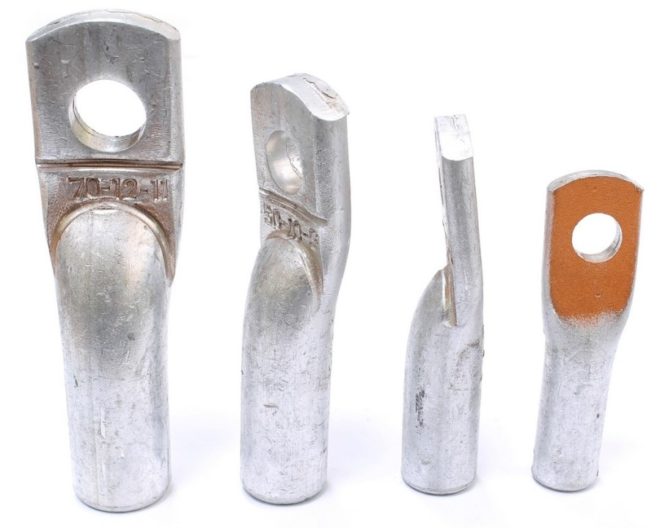
Such a device provides a transition from aluminum wire to copper. You can buy it in a specialized store.
Step-by-step installation of the machine - in the following video:
Conclusion
In this article, we figured out the question of how to properly connect circuit breakers in an electrical panel, and also considered the types of these devices and the features of their operation. Using the information provided, you can independently install the package and connect it to your home network. Naturally, with this procedure, you must strictly follow the rules of electrical safety, as with any work related to electricity.

